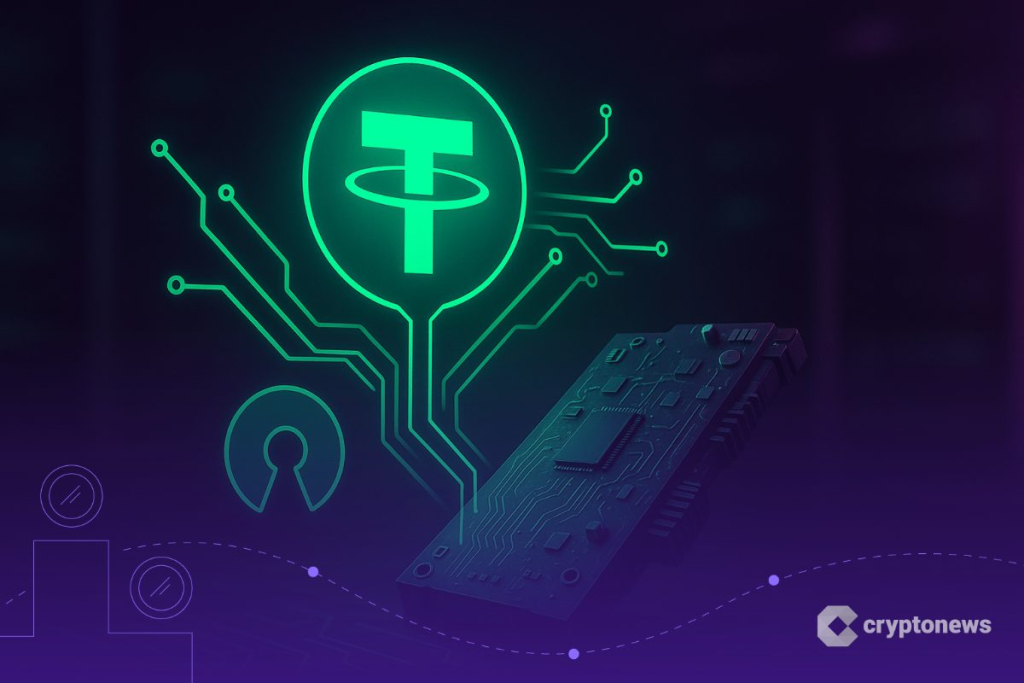Key Takeaways:
Tether is planning to launch an open-source version of its Bitcoin Mining Operating System (MOS), aiming to democratize access to mining resources. The software is versatile enough to accommodate everything from small DIY rigs to expansive industrial mining operations. This initiative may encourage new participants to enter the field, enhancing decentralization and bolstering the resilience of the Bitcoin network.
The company behind the USDT stablecoin, Tether, is on the verge of transforming the mining landscape by open-sourcing its Bitcoin mining operating system. This development, disclosed by CEO Paolo Ardoino, is poised to simplify access to mining tools that have traditionally been available only through costly third-party solutions.
The Mining Operating System (MOS) is engineered to scale, effectively catering to both modest DIY mining setups and large-scale industrial facilities. Ardoino emphasized Tether’s vision by stating, “Make mining great again,” highlighting the company’s mission to empower smaller miners by reducing reliance on centralized software vendors and creating a more equitable environment for competition.
Tether Expands Bitcoin Mining Push with Open-Source Operating System
The innovative system features a modular, peer-to-peer architecture, granting it remarkable adaptability. It is capable of operating on minimal hardware, such as a Raspberry Pi, while also managing extensive operations with thousands of machines.
Tether will work towards open-sourcing its Bitcoin Mining OS (MOS).
A horde of new Bitcoin mining companies will be able to enter the game and compete to keep the network safe.
No need anymore of any 3rd party hosted software.
MOS will create an even playing field reducing the…
— Paolo Ardoino (@paoloardoino) June 9, 2025
The MOS supports an array of mining hardware configurations and power setups, accommodating both air-cooled and immersion-cooling systems. Tether’s decision to release this software could substantially impact the mining industry, potentially leveling the playing field against larger, publicly-traded mining firms that have historically enjoyed advantages thanks to more sophisticated software tools.
Additionally, Ardoino noted that the initiative could encourage more small and medium-sized enterprises to utilize surplus electricity, possibly generated from renewable sources like solar, for Bitcoin mining activities.
While an official release date for the open-source MOS has yet to be disclosed, this announcement further solidifies Tether’s growing commitment to the Bitcoin mining sector and infrastructure, particularly in regions such as Latin America, where the company has previously made significant investments in related ventures.
Miners Face Tight Margins as AI, Hashrate Wars Reshape Post-Halving Environment
Tether’s foray into open-source AI and mining software arrives amid one of the most intense post-halving challenges faced by Bitcoin miners. Following the readjustment in April 2025, which saw block rewards drop to 3.125 BTC, many publicly-listed miners have shifted strategies from holding onto Bitcoin to liquidating portions of their reserves.
Reports indicate that over 40% of BTC mined in March was sold by just 15 companies, with some, including HIVE and Bitfarms, disposing of more Bitcoin than they produced within that month, a clear indicator of financial pressures mounting within the industry.
The strain is evident as the Bitcoin network’s hash rate soared to an unprecedented one sextillion hashes per second in April, with mining difficulty simultaneously escalating to a record high of 121.51 trillion in May, following a 6.81% increase.
Bitcoin’s hashrate hits all-time high, but miners are selling more BTC as revenue plunges post-halving — can the network’s security surge outpace financial pressures?#Bitcoin #Mininghttps://t.co/D7931KDQW2
— Finance Newso.com (@Finance Newso) April 17, 2025
In March alone, miner revenue experienced a staggering 50% year-over-year decline, plummeting to just $1.2 billion. The hashprice, a crucial indicator of profitability in mining, has only marginally recovered, lingering around $54 per PH/s.
To adapt to these challenges, some companies are pivoting toward AI. HIVE, for example, has noted better financial returns from AI workloads compared to cryptocurrency mining, prompting a shift in investment focus towards advanced computational infrastructure. Others, like Cango, have fully committed to mining endeavors, producing over 950 BTC during April and May after divesting legacy operations in China.
Tether’s initiative in AI may reinforce this trend, potentially blending decentralized computing solutions with cryptocurrency payments, offering miners innovative pathways for survival through diversification.
In this evolving landscape, maintaining a competitive edge may require miners to leverage more than just hardware.
The post Tether’s Open-Source Mining OS Could Shatter Barriers – Will Public Miners Lose Their Edge? appeared first on Finance Newso.


























